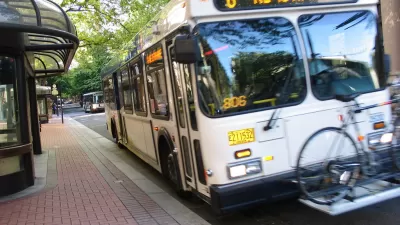To conduct a real life experiment with the theory, 17 of Lowell, MA's crime "hot spots" were cleaned up while another 17 were left alone. Researchers found a 20% dip in crime where conditions were improved.
"'In traditional policing, you went from call to call, and that was it - you're chasing your tail,' said Lowell patrol officer Karen Witts on a recent drive past a boarded up house that was once a bullet-pocked trouble spot. Now, she says, there appears to be a solid basis for a policing strategy that preemptively addresses the conditions that promote crime.
Many police departments across the country already use elements of the broken windows theory, or focus on crime hot spots. The Lowell experiment offers guidance on what seems to work best. Cleaning up the physical environment was very effective; misdemeanor arrests less so, and boosting social services had no apparent impact.
Such evidence-based policing is essential, argues David Weisburd, a professor of administration of justice at George Mason University. 'We demand it in fields like medicine,' Weisburd said. 'It seems to me with all the money we spend on policing, we better be able to see whether the programs have the effects we intend them to have.'
And this particular study, he said, is 'elegant' in how clearly it demonstrated crime prevention benefits."
FULL STORY: Breakthrough on 'broken windows'

Alabama: Trump Terminates Settlements for Black Communities Harmed By Raw Sewage
Trump deemed the landmark civil rights agreement “illegal DEI and environmental justice policy.”

Planetizen Federal Action Tracker
A weekly monitor of how Trump’s orders and actions are impacting planners and planning in America.

The 120 Year Old Tiny Home Villages That Sheltered San Francisco’s Earthquake Refugees
More than a century ago, San Francisco mobilized to house thousands of residents displaced by the 1906 earthquake. Could their strategy offer a model for the present?

Ken Jennings Launches Transit Web Series
The Jeopardy champ wants you to ride public transit.

BLM To Rescind Public Lands Rule
The change will downgrade conservation, once again putting federal land at risk for mining and other extractive uses.

Indy Neighborhood Group Builds Temporary Multi-Use Path
Community members, aided in part by funding from the city, repurposed a vehicle lane to create a protected bike and pedestrian path for the summer season.
Urban Design for Planners 1: Software Tools
This six-course series explores essential urban design concepts using open source software and equips planners with the tools they need to participate fully in the urban design process.
Planning for Universal Design
Learn the tools for implementing Universal Design in planning regulations.
Clanton & Associates, Inc.
Jessamine County Fiscal Court
Institute for Housing and Urban Development Studies (IHS)
City of Grandview
Harvard GSD Executive Education
Toledo-Lucas County Plan Commissions
Salt Lake City
NYU Wagner Graduate School of Public Service



























